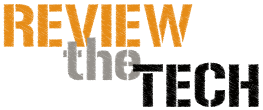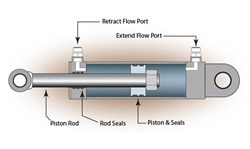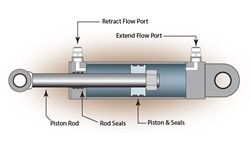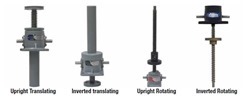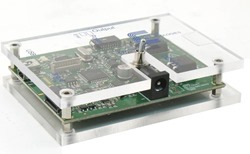How to Control your Tables via Apple iPad
Linear actuators are devices that generate linear motion perpetrated by the motor’s circular motion. These devices have various uses in machine designs and industrial applications. The linear actuators apply various mechanisms including hydraulic, pneumatic, and mechanical systems, to generate linear motion from the motor’s circular motion. This increases the complexity of multiple categories of linear actuators available. The linear actuators that could act as electric TV lifts in controlling the motion of a table through an iPad include, hydraulic actuators, pneumatic actuators, piezoelectric actuators, and mechanical actuators. These linear actuators can be obtained from Progressive Automations or PA actuators store depending on one’s requirements.
Hydraulic Actuators
Hydraulic actuators consist of a piston and a hydraulic cylinder that converts the piston’s vertical motion to the crankshaft’s rotational motion. The threaded part of the crankshaft advances the shaft’s threaded section where the table is connected to. The crankshaft’s rotary movement would move the table either downwards or upwards. An iPad can be used to control the piston cylinder’s motion through an adjacent electrical circuit.
Mechanical Actuators
Mechanical actuators translate rotational movement to linear movement. This is achieved through the applications of various mechanisms including the screws, cams, and even pinion and rack systems. For instance, the use of screw system causes the threaded shaft’s linear motion due to the rotary motion of the screw. The mechanical actuators’ motion can be automatically and remotely controlled by the application of iPad apps.
Piezoelectric Actuators
The piezoelectric actuators use piezo electric effect to generate motion, where certain materials or substances expand when a voltage is applied across their ends. These actuators produce a resolution corresponding to the expansion of piezoelectric materials and they can be used to lift the table over short lengths or distances. The iPad can be used to control the voltage applied across the ends of piezoelectric materials and hence control the motion of the table.
Pneumatic Actuators
The pneumatic actuators use pressure as the main principle in causing the movement of the table. Pneumatic actuators similar to the hydraulic actuators discussed above. However, these actuators use compressed gas or compressed air as their working fluid. In this case, the table’s linear motion is achieved through exerting pressure on the gas or releasing the pressure on the gas. Typically, the compression of the gas can lift the table while the release of pressure moves the table downwards. The motor is used to produce the force which is then exerted on the pneumatic actuators to generate the table’s linear motion. The motor can be remotely controlled using iPad apps that are installed on the pneumatic systems.
Conclusion
Both the consideration of the linear actuators’ design specifications as well as maintenance is necessary for optimal performance of the actuators. The lifespan of linear actuators is reduced by overloading, that is, lifting loads that surpass the actuators’ design specifications. Overloading of the hydraulic and pneumatic actuators might cause leaks. The iPad can be used to control two major parameters of the table: the length or distance of travel and speed of rotation of the table. The actuating device’s overall performance is determined by the motor’s duty cycle.
